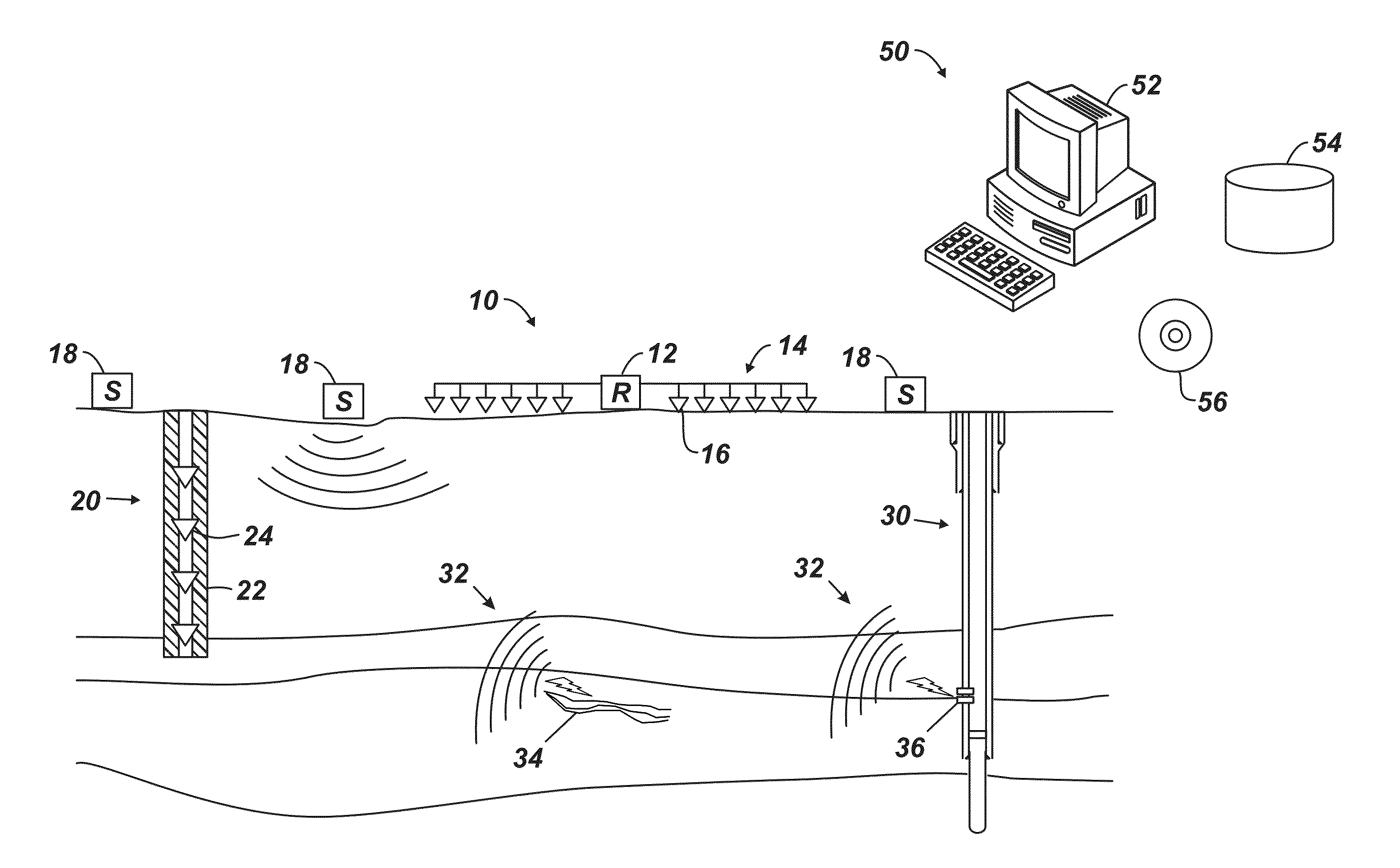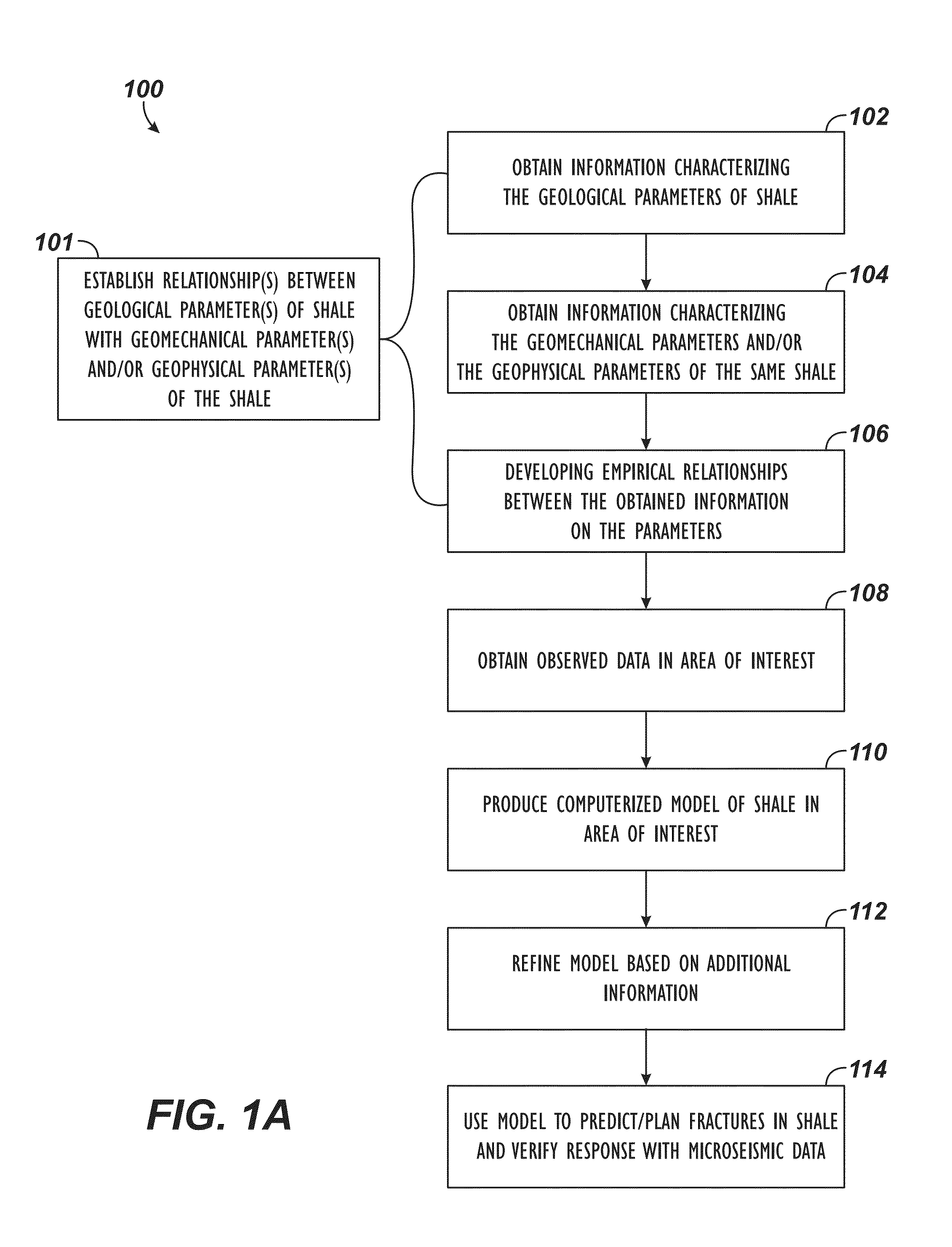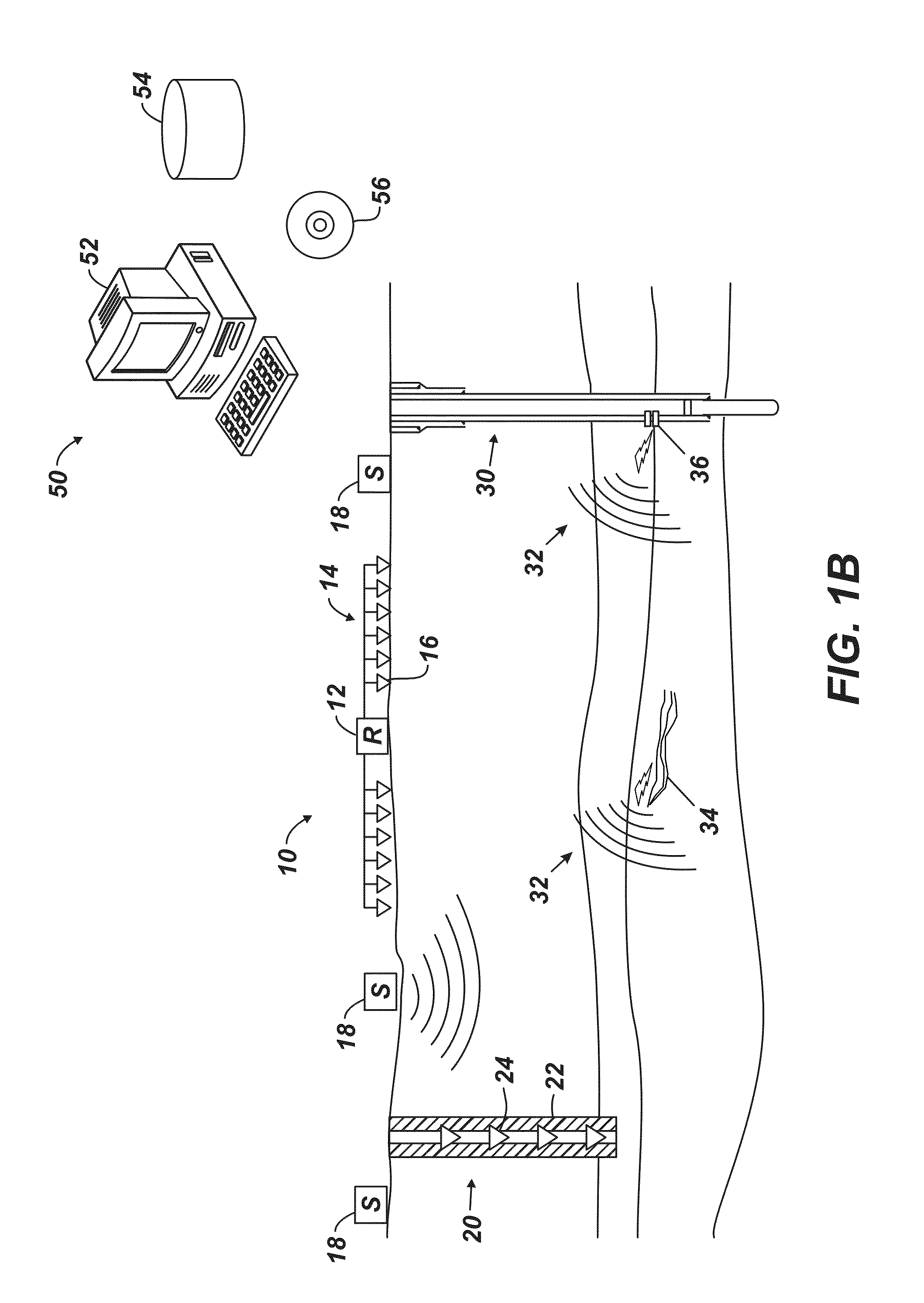Model Predicting Fracturing of Shale
a model and shale technology, applied in the field of model predicting shale fracture, can solve the problems of no computer model that can reliably predict the microseismic response, no understanding of how shales fracture, and no way to relate geophysically observable properties of shale to its geomechanical properties, so as to minimize the probability of contamination of ground water resources, improve recovery, and increase production
- Summary
- Abstract
- Description
- Claims
- Application Information
AI Technical Summary
Benefits of technology
Problems solved by technology
Method used
Image
Examples
Embodiment Construction
[0021]A. Summary
[0022]Disclosed herein is a model for predicting fracturing of shale, which can be used for a number of purposes disclosed herein. A process 100 shown in FIG. 1A is used to develop the predictive model. FIG. 1B diagrams some components for developing and using the disclosed model to predict facture in shale. These FIGS. 1A-1B will be discussed together in describing the development of the predictive model.
[0023]Initially, one or more relationships are established between geological parameter(s) of shale with geomechanical parameter(s) and / or geophysical parameter(s) of the shale (Block 101: FIG. 1A). To do this, for example, information characterizing geological parameters of shales is obtained at multiple scales (e.g., micron, nano-scale, millimeter, plug, or seismic scales) (Block 102: FIG. 1A). As then shown in FIG. 1A, information characterizing the geomechanical parameters and / or the geophysical parameters of the same shale is also obtained (block 104).
[0024]The...
PUM
 Login to View More
Login to View More Abstract
Description
Claims
Application Information
 Login to View More
Login to View More - R&D
- Intellectual Property
- Life Sciences
- Materials
- Tech Scout
- Unparalleled Data Quality
- Higher Quality Content
- 60% Fewer Hallucinations
Browse by: Latest US Patents, China's latest patents, Technical Efficacy Thesaurus, Application Domain, Technology Topic, Popular Technical Reports.
© 2025 PatSnap. All rights reserved.Legal|Privacy policy|Modern Slavery Act Transparency Statement|Sitemap|About US| Contact US: help@patsnap.com



